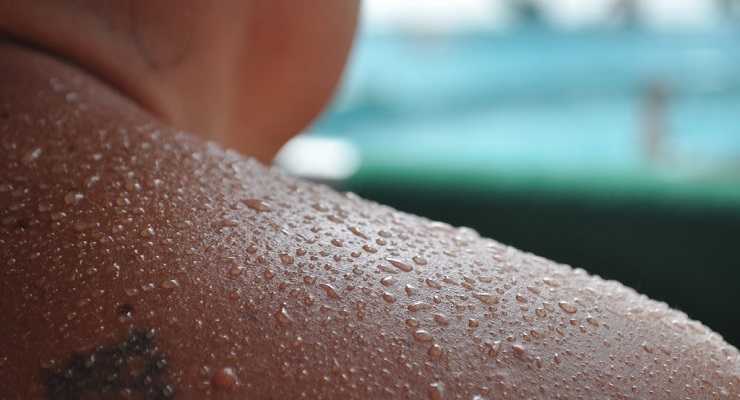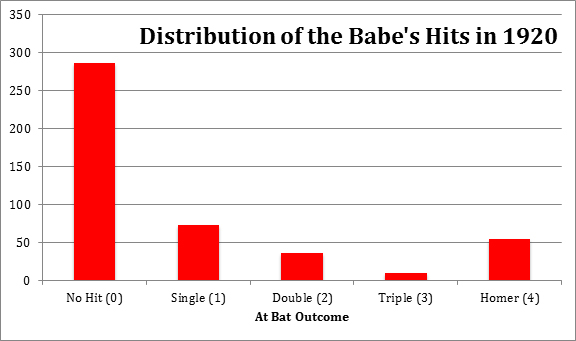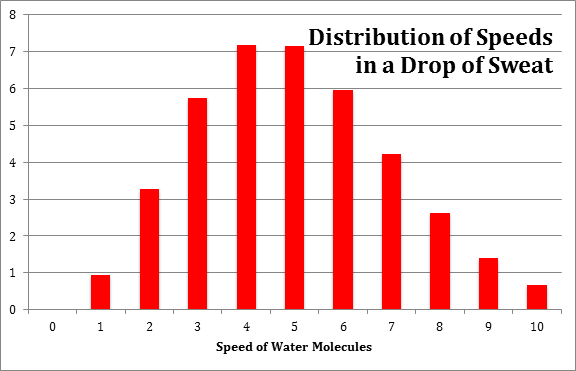The Physics of the Dog Days of Summer

Sweating actually helps to cool players, especially in the hottest months. (via Kullez)
The Dog Days of Summer are upon us, traditionally synonymous with the heating up of pennant races and, more recently, with clubs hosting Bark-in-the-Park events. Actually though, the name comes to us from the location of the Big Dog.
By Big Dog, I am not referring to the Hall-of-Fame, seven-time All-Star infielder for the Big Red Machine, Tony Perez, but to the far less talented constellation Canis Major. Canis Major’s only skill is to be able to be at the same location in the sky as the sun during July and August.
Canis Major contains the brightest star in the night sky, Sirius. Perhaps you now understand why a well-known satellite radio company uses a dog as its logo. Please note that you can’t see Sirius during the Dog Days because it is aligned with the sun. You’ll have to wait until later in the year when it is no longer in conjunction.
The Romans, in a desperate attempt to understand why Earth heats up so much during this part of the year, believed the extra heat provided by Sirius was the culprit. They, of course, didn’t know the Dog Star has a great alibi. It is over five hundred thousand times farther away from us than the sun. Yet the name stuck, and this time of the year is now known as the Dog Days.
Alrighty then, why is summer so much warmer than winter? Many extremely smart people, like Harvard graduates, believe Earth is closer to the sun in summer. Like the Romans, their logic is reasonable; it just turns out they are incorrect. In fact, Earth is slightly farther from the sun during our summer months. You might recall it is winter in the southern hemisphere when it is summer here. That pretty much rules out any explanation involving the distance to the sun.
The actual explanation is because the Earth’s spin axis is not perpendicular to the plane of its orbit around the sun. Without going into too much detail, Earth’s tilt causes the northern hemisphere to get the more direct rays of the sun in the summer and less direct rays in the winter. That’s why the sun is higher in the sky in the summer than the winter. This also explains why the southern hemisphere has winter when we have summer and vice-versa.
The Dog Days get us out to the ballparks in droves (at least where there are pennant races) despite the heat and humidity. As fans, we long to have the sense that we are just like the ball players, and in one sense we are. The weather causes us to sweat like crazy. Why do we sweat anyway, and why do our heroes sweat so much more?
It won’t surprise you to learn the physics is pretty simple. Our bodies generate heat as muscles work. Whether it is the pumping of your heart in the stands or the pumping of the runner’s legs as he rounds third, heat is generated and must be removed from the body. Sweat helps us cool off and not overheat.
To understand more deeply how sweating cools us, we need to learn that heat is a form of energy often associated with the motion of atoms and molecules.
So the water molecules in a drop of sweat are moving around at high speeds and colliding with each other. The connection between the speeds of these molecules and temperature is like the connection between the value of different hits and the slugging percentage I will call “slugging average” to emphasize the similarity to temperature as an average.

In the Babe’s first season with the Yankees, he set the single-season record for slugging average at 0.847 – not too far from one base per at-bat! This record stood for 81 years until Barry Bonds broke it in 2001. The chart above shows the distribution of hits for Ruth in 1920. As a reminder you calculate slugging average in the following way:
(# of singles) x 1 + (# of doubles) x 2 + (# of triples) x 3 + (# of homers) x 4
——————————————————————————————————-
Total at-bats

Above is a hypothetical chart of the number of water molecules at each speed in a drop of sweat. Note the similarity with the chart of Ruth’s hits. Of course, there are more categories now, 11 instead of five. The temperature is related to the average speed. If you wanted that number, you could just adapt the formula for slugging average.
(# w/ speed 1) x 1 + (# w/ speed 2) x 2 + … (# w/ speed 10) x 10
——————————————————————————————————-
Total at-batsGoodbye for now.
Now here’s the trick that creates the cooling – evaporation. Which water molecules do you think are most likely to get out of the drop of sweat first, the fast ones or the slow ones? Well, it is the fast ones as you might expect since they have the speed and energy to get out.
Since the fastest molecules leave, what do you suppose happens to the average speed of the molecule left in the drop? That’s right, it drops. The average temperature drops the same way the Babe’s slugging average would drop if we took away all the homers.
In summary, sweat cools us because the temperature of the sweat continually tries to fall as the hottest water molecules leave first. Since heat continues to be generated by your body, the net result is that the temperature of your sweat doesn’t actually drop, but it is an efficient way to get the heat out of your body and into the air.
Of course, you can even remove more heat by wetting your face with already cooled water. Players also use cold towels and in the old days wet cabbage leaves. Anything that is wet will cool by this evaporative process.
Since you are losing water to create the sweat, it would seem logical this could be an excellent argument for more beer! In the interest of full disclosure, I must inform you–ever so sadly–the reverse is true. You must keep drinking fluids, but alcohol is the worst choice.
You can’t claim you didn’t really know this judging by the long lines at the restrooms. The medical folks tell us that even though beer is almost all water, if you drink 12 ounces, the result is waiting in line to deposit about 19 ounces. Now, far be it from me to discourage adult beverage consumption. The point is to be sure to drink some extra water as well during the Dog Days. To paraphrase a well-known series of adult beverage commercials, “Stay hydrated, my friends.”
I hope you enjoyed these scientific tidbits related to the Dog Days. If not, I hope you’re lucky enough to at least enjoy a pennant race!

Now can you explain why the summer solstice isn’t the hottest day of the year, on average? It gets the most sunlight.
Because much of what makes the air hot is heat radiated from the earth. July and August are generally hotter than June because the earth has absorbed more heat which it radiates into the air. At some point in August, more or less, the extra heat radiated by the earth is balanced by the lesser heat reaching the earth from the sun’s rays, and after that, days on average drop in temperature.